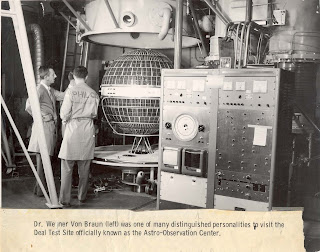255 Whalepond Road, Oakhurst, NJ
Foxhurst Farms/Deal Test Site
The Deal Test Site (now the eastern portion of Joe Palaia Park) was originally started as the Foxhurst Farm, a 63-acre tract that is now the southern portion of the park. It was purchased by Western Electric (part of AT&T and later Lucent), the manufacturing arm of AT&T, bought the Foxhurst Farm and began radio experiments on the land it called Deal Test Site, in 1919. The site was later expanded with an additional 145 acres purchased by AT&T in 1927.
The farmland (once part of the Woolley homestead), was far removed from the crowded airwaves of the city and an ideal spot to set up radio experiments. Western Electric erected five antennae towers and began work. For more than three decades, until the operation moved to Holmdel in 1953, Deal Test Site was the home of world-changing breakthroughs in the technology of radio wave transmission.
After World War I, AT&T used the site to conduct ship-to-shore wireless experiments off the Jersey Shore. Five large radio towers were eventually erected and used to broadcast speech and music for a range of 1,000 miles. In 1921, a two-story white building was built, which was used as a laboratory and dormitories for engineers.
Research continued through the 1930s in conjunction with Bell Telephone Laboratories (the successor to Western Electric’s research division), to use shorter wavelengths for radio transmission, this eventually led to the development of the microwave radio relay systems used to carry long-distance telephone traffic in the latter half of the 20th century. The development of fiber-optic communications (also by Bell Labs) ended the widespread use of microwave repeaters.
In 1953, the test site was sold by AT&T, and the new owners leased the property to the U.S. Army Signal Corps for tracking satellites. A 28-foot dish antenna on a 40-foot tower (near the Bicentennial Oak Tree) was used to pick up signals from Russian satellites Sputnik 1 and Sputnik 2. The large circular concrete base of this antenna is still visible today.
In the 1960s, the Army transmitted the first photograph via facsimile ("fax") to Puerto Rico from the site using the Courier satellite.
Until its break-up in the 1980s, AT&T was the nation's telephone company. It included a national-wide network and local telephone companies [the ''Baby Bells'']. It was the country's only long-distance carrier. It invented much of the technology of the information age, including the transistor, and it manufactured telephone equipment required to wire the country for sound--from the center office to the home, including the telephone itself














































